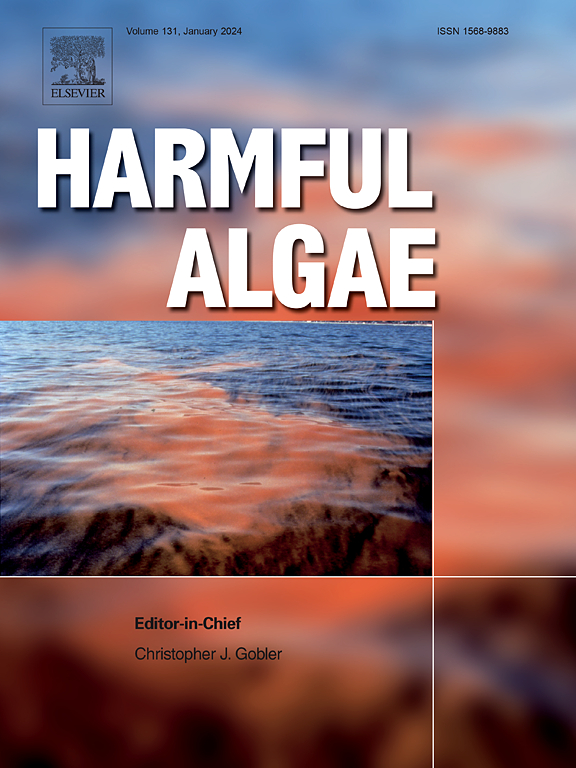由于夏季干旱,从蓝藻到鞭毛藻优势的意外转变
IF 4.5
1区 生物学
Q1 MARINE & FRESHWATER BIOLOGY
引用次数: 0
摘要
主流的范式是,未来的气候变化情景将导致全球蓝藻繁殖的频率、强度和持续时间增加。因此,在2018年瑞典南部异常温暖干燥的夏季,蓝细菌并没有主导温带湖泊Vombsjön的浮游植物群落,这是出乎意料的。Vombsjön以有毒的蓝细菌繁殖而闻名。相反,一种潜在有毒的鞭毛藻,polonicum,形成了一个大的华,并在整个季节占主导地位。鞭毛藻与蓝藻具有重要的功能特征,但很少有研究考虑在未来气候变化情景下鞭毛藻和蓝藻之间的竞争。为了了解导致2018年N. polonicum开花的潜在因素,我们对Vombsjön湖进行了额外两年的研究。与随后的年份相比,2018年的特征是沉积物表面附近的热分层和缺氧期延长。土壤表面温度和可溶性活性磷与褐藻生物量呈显著正相关。因此,我们认为较高的温度和较高的水柱稳定性的组合比蓝藻更有利于N. polonicum。考虑到这些因素通常与蓝藻的成功相关,我们得出结论,温带湖泊的淡水浮游植物群落组成可能在变暖的世界中采取不同的途径。本文章由计算机程序翻译,如有差异,请以英文原文为准。
Unexpected shift from cyanobacterial to dinoflagellate dominance due to a summer drought
The ruling paradigm is that future climate change scenarios will lead to an increase in the frequency, intensity, and duration of cyanobacterial blooms across the globe. It was therefore unexpected when, during an unusually warm and dry summer in southern Sweden in 2018, cyanobacteria did not dominate the phytoplankton community of the temperate Lake Vombsjön known for toxic cyanobacterial blooms. Instead, a potentially toxic dinoflagellate, Naiadinium polonicum, formed a large bloom and was dominant for the entire season. Dinoflagellates share important functional traits with cyanobacteria, but few studies have considered competition between dinoflagellates and cyanobacteria under future climate change scenarios. In order to understand the underlying factors leading to the N. polonicum bloom in 2018, we designed a study of Lake Vombsjön for an additional two years. When compared with subsequent years, 2018 was defined by an extended period of thermal stratification and hypoxia near the sediment surface. A significant positive relationship was also identified between N. polonicum biomass and both surface water temperature and soluble reactive phosphorus. We therefore suggest that the combination of higher temperatures and higher water column stability benefitted N. polonicum more so than cyanobacteria. Given that these factors are generally associated with cyanobacterial success, we conclude that freshwater phytoplankton community composition in temperate lakes can take different pathways in a warmer world.
求助全文
通过发布文献求助,成功后即可免费获取论文全文。
去求助
来源期刊

Harmful Algae
生物-海洋与淡水生物学
CiteScore
12.50
自引率
15.20%
发文量
122
审稿时长
7.5 months
期刊介绍:
This journal provides a forum to promote knowledge of harmful microalgae and macroalgae, including cyanobacteria, as well as monitoring, management and control of these organisms.
 求助内容:
求助内容: 应助结果提醒方式:
应助结果提醒方式:


